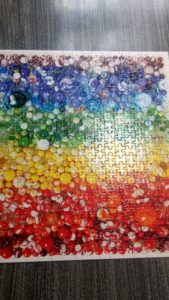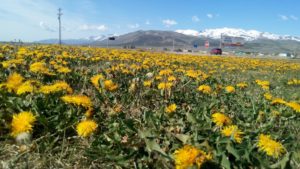Daisies have nothing to do with autism and Alzheimer’s risk but in order to simplify complex topics into real world strategies for preventative health care guidance the complexity has to be thoroughly understood. In the last post the medical and chemistry jargon got thicker than a field of daisies and taking a break can help the brain sort through the field to find a bouquet – metaphorically speaking.
In my real world I also found some online courses to help brush up on making sense of medical and chemical jargon for the lay reader or the health professional. I’m taking some online courses available through Coursera.org: Writing for the Sciences, Stanford University and Medical Neuroscience, Duke University, and for later in the summer: Essentials of Global Health, Yale University.
My own health has been helped by the information I gather – the bouquets of daisies can turn into good hair days and the ability to grow skin. It is easy to take health, and skin, for granted until you lose it and then a physician with a prescription pad is not always available with a helpful answer. “We don’t know what causes it or how to help you but this pain killer might leave you addicted and/or cause uncomfortable side effects” – not a helpful answer and may be a more dangerous answer than “Your lab tests are normal, why don’t you go talk to a therapist about your problems (probably psychosomatic/hypochondria).” Thanks, I’ll go for a walk and think about that, maybe I’ll be able to pick some daisies and get some fresh air and sunshine while I’m out.
Taking a break sometimes is just what is needed to allow the brain to sort through a complicated issue – the solution is there but it may need to be selected out of a field of many possible answers. Some exercise and a little time to not think consciously about it can be what the subconscious needs to put together the pieces so the larger puzzle can be seen. (Don’t Solve Your Problems – Lolly Daskal) Taking a walk was a strategy that Charles Darwin and Charles Dickens liked to use: “If I couldn’t walk fast and far, I should just explode and perish.” – Charles Dickens – (For a More Creative Brain, Take Breaks – Inc.com) (Michael Simmons Quote)

Taking a walk may not help you solve all your tough puzzles but the exercise is still good for you.

So what did daisies have to do with yesterday’s post – they represented the pause I took to let all the material that I had read settle into a few take home points about real world strategies that might help protect people with a genetic predisposition to Alzheimer’s Disease or autism – vigorous exercise regularly may help; a diet with a lower than typical balance of calories from carbohydrates versus fats and protein (30% carbohydrate calories); and occasional fasting for a day or afternoon (14) may all help the body to clear out the protein deposits that seem to collect and lead to Alzheimer’s or autism changes in the brain.
Disclaimer: Opinions are my own and the information is provided for educational purposes within the guidelines of fair use. While I am a Registered Dietitian this information is not intended to provide individual health guidance. Please see a health professional for individual health care purposes. Thanks.
